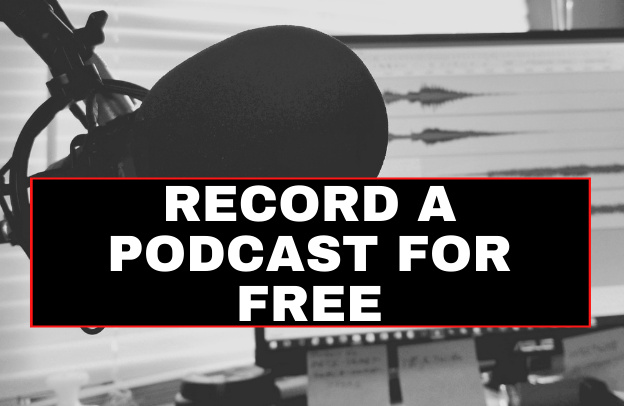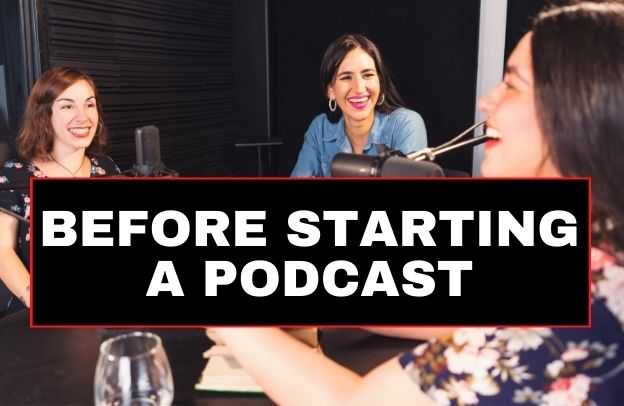How to Record a Podcast for Free 2023

Are you at the beginning of your podcasting journey and know nothing about how to get your idea into people’s ears? If so, you are in the right place. Here, we will look at the ways to record your podcast show for free and what software you can use to get you started.
Download the first chapter of The Storytelling Series: Beginners’ Guide for Small Businesses & Content Creators by Obehi Ewanfoh.
Make a Recording with Audio Software
This is the simplest way to record your podcast if you’re the only one hosting it. Why? Because all you’ll need is a USB microphone and your preferred editing software.
Plugging in your microphone, making sure it’s packed in your audio preferences, and hitting record is all it takes to get started.
It’s worth noting that if you’re using more than one USB microphone, you’ll need to do some backend configuration to get things working.
What Free Software to Use in Podcast Audio Recording?
There are a variety of programs to choose from, but it all boils down to personal preference.
Audacity
A bunch of podcasters uses this free program.
This program is a great place to start if you’re just getting started and trying to figure out if this is stuff you want to do long-term.
Here are the steps to record on Audacity:
- Assumed that you have downloaded your audacity, the next step to do is consider a topic you’d like to discuss and write down a general outline of what you’ll be talking about.
- Begin recording. Maintain your levels near the 0 (middle) mark. On Audacity, you’ll notice bars that bounce back and forth as you speak; keep them as close to zero as possible while still speaking normally.
- If you talk too loudly, the microphone will do something called “clipping,” which makes it sound like your entire voice is vibrating through tin foil.
- Remove background noise, change parts where you breathed into the microphone by accident, and other minor details in the editing part.
- Remove background noise, change parts where you breathed into the microphone by accident, and other minor details.
- Make an Mp3 file out of the recording.
- Subscribers can download the Mp3 by uploading it somewhere on the Internet.
- Continue to add new MP3s to the queue.
You can also use Adobe Program. However, it’s a subscription tool. It’s used by professionals, but it’s not as intimidating as a program like Pro Tools, so even if you’re a beginner, you can get a handle on it.
Make a Video Recording with Video Conferencing Software
You can record your podcast using video conferencing software like Skype or Zoom, but because these are video conferencing software rather than platforms designed specifically for podcasting, the audio quality is often lower.
Now, here is your guide of making a video recording using video conferencing software for a podcast.
First, you’ll need to choose a video conferencing software that works well for your needs. Some popular options include Zoom, Skype, Google Meet, and Microsoft Teams.
Once you’ve selected your video conferencing software, follow these steps to create a video recording:
- Set up your equipment: You’ll need a computer with a webcam and microphone, as well as a stable internet connection. Make sure you’re in a quiet location and that your background is suitable for the podcast.
- Schedule the video conference: Use your video conferencing software to schedule a meeting with your guest(s). Be sure to send them the link to join the meeting and any necessary login information.
- Prepare for the recording: Make sure your recording settings are set up correctly in your video conferencing software. You may want to record the audio and video separately so that you have more control over the editing process.
- Start the recording: When everyone is ready, hit the record button in your video conferencing software. Make sure everyone knows that the recording is happening so that they don’t say or do anything they wouldn’t want on the podcast.
- Conduct the interview: Conduct the interview as you normally would, being sure to engage with your guest(s) and ask interesting questions.
- End the recording: When you’re finished, end the recording in your video conferencing software.
- Save the recording: Download the recording from your video conferencing software and save it to your computer.
- Edit the recording: Use video editing software to edit the recording as necessary. You may want to add an intro and outro, cut out any dead air, or add music or sound effects.
- Publish the podcast: Once you’re happy with the final product, publish the podcast to your preferred platform.
That’s it! With a little bit of planning and preparation, you can easily use video conferencing software to record a podcast. Good luck!
In using this software, make sure you keep in mind the following:
- If you’re using Skype to record, you’ll need to invest in some additional software to give you more control over the audio (Ecamm for Mac and Pamela for PC).
- There are some settings in the back end of Zoom that can help you get better audio quality.
Use a Remote Recording Platform to Record Your Podcast
The beauty of these platforms is that they were designed specifically for recording podcasts. That means you can get really high-quality audio if everyone has their own microphone and they’re recording in a good space.
Many platforms, including video, are essential in remote recording because you need to be able to see who you’re speaking with. You can use one of these:
- Zencastr
- Squadcast
- fm
Use a Portable Recording Device in Your Podcast Recording
If you want to record people in person, a portable recorder can be a great option.
Lightweight and dependable, devices like the Zoom H6 and Zoom Potdtrak can also be used as an audio interface, allowing you to use your XLR microphones with your computer.
Conclusion on How to Record a Podcast for Free
Make sure you think about where you’re going to record for a long time. Your recording space must be audio-friendly if you’re setting up a home studio. Avoid rooms with reflective surfaces, such as tiles, windows, or high ceilings.
It’s not necessary to spend a lot of money to get this right. A couple of thick curtains or couch cushions will suffice. However, if you want your show to be a success, you must consider the sound quality when recording.
Download the first chapter of The Storytelling Series: Beginners’ Guide for Small Businesses & Content Creators by Obehi Ewanfoh.






